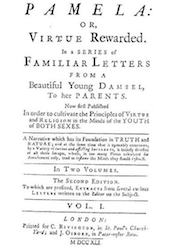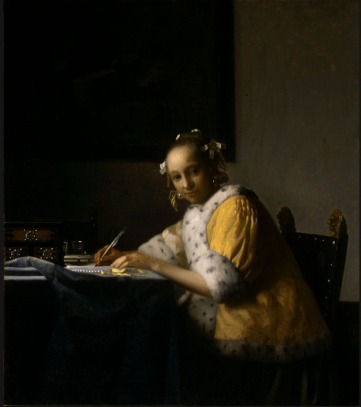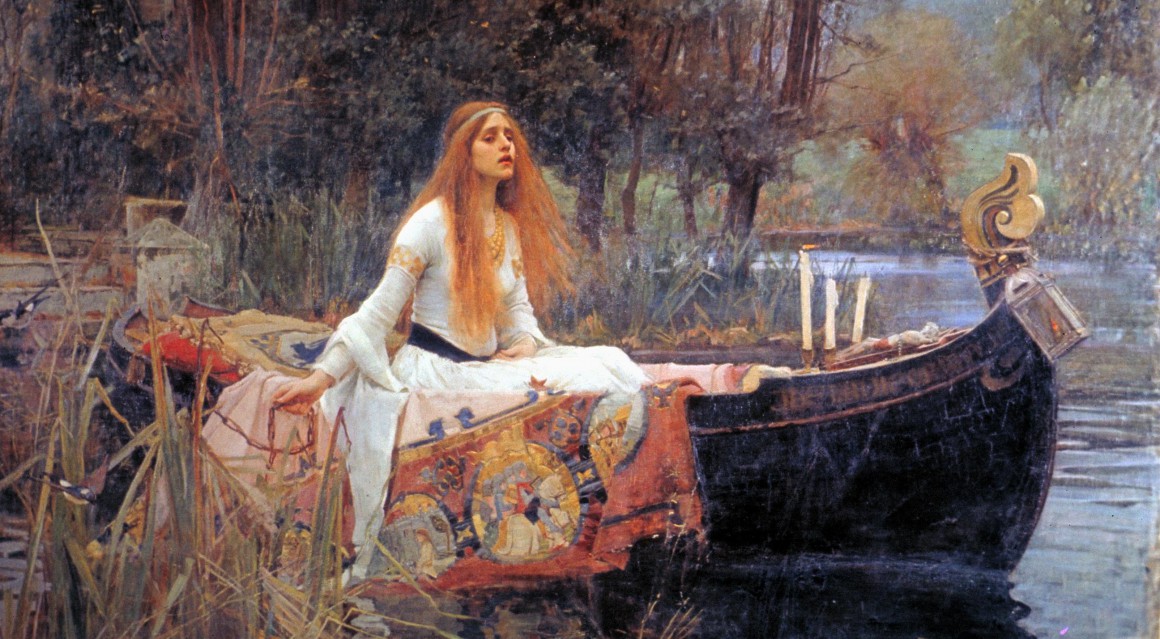Hilary Lennon’s seminar on the concept of letter writing and its place in the literary tradition not only drew attention to the letters of Irish literary figures in general but of the important role letter writing plays at large in literature. She describes it as almost a literary genre apart-and considering the rich historical context of the letter and its role in the lives of the most famous writers in the world, one can’t help but agree with this statement. The seminar delved into the pivotal role letters played in the day-to-day lives of writers such as Joyce and Beckett. I found the idea of the letter as a language “mosaic” very compatible with the characteristics of the letter itself; that letters are composed of elements of the formal and informal, with similar emphasis on their aesthetic and historical value.
As mentioned in seminar, the expansion of public education brought the concept of learning to write letters into the classroom. Phillip Chubbs’ 1946 article examines the beginnings of young student’s education in letters; he believes that the aptitude to write letters begins through childhood nursery rhymes and stories, which offer an introduction to a variety of rhythms and lyrical patterns. He further states what he believes are ground rules for letter writing, offering tips on how to create the basis for a good letter. He believes that any successful attempt should tempt the reader to “read aloud with gusto” (Chubb, 220); the key to achieving this is to focus on the auditory quality of the letter. This is followed by some notes on appropriate punctuation and tone. While these rules are not dogma in the sphere of personal correspondence, they do offer a template that bears some relation, however slight, to every letter form.
Lennon mentioned the use of letters as a technique in prose work, and its purpose as a conduct manual. Pamela by Samuel Richardson was of the best-known examples of the epistolary form-it is a novel I’m particularly fond of. Composed of a series of letters addressed to the heroine’s parents, the letter acts as a rare record of the truth in an environment of manipulation and also a vivid account of emotional turmoil. That the novel became a bestseller clearly shows a letter-literate public. Pamela’s melancholy account of her captivity at the hands of her master blends feminist politics, class and personal feeling- it really does give the impression of a literary mosaic. However, it also lends itself as a conduct manual, clearly stated in the title, Pamela, Or Virtue Rewarded. Pamela’s emphasis on her “innocence” in spite of her “cruel usage”, and also her constant stream of self-advice prove that through the letter, the author is not only placing the character on intimate terms with the audience-she is their moral guide to boot. Again, this show the various services of the letter form.

The seminar also alluded to the representation of letters through art, specifically in the work of Johannes Vermeer. A record of an art exhibition of Vermeer’s work that took place in the National Gallery, Dublin, in 2003 examines the theme of the paintings in more detail. It noted that the concept of letter writing was a favoured theme amongst Dutch painters of the seventeenth century; according to Mariet Westermann, the dawn of the seventeenth century brought a notable increase in first person statements. This included diaries, letters, memoirs and poems. The private letter was a subject that held particular interest. In Vermeer’s A Lady Writing, the lady seated at her table writing not only symbolizes a day-to-day activity, but an expression of independent thought unencumbered by patriarchal authority. This recording of the esteem letter writing held in history through the art form offers concrete evidence of its place in the lives of people down through the centuries.

Letters have experienced a fresh surge of interest from the media more recently; the Letters Live series, a recital of famous letters by various public figures, is beginning to take its place as a popular yearly event. In the wake of the bestselling success of the compilation Letters Of Note (which I received as a birthday present last July, coincidentally) this series was organized to take place yearly in Freemason’s Hall, London to “celebrate the enduring power of literary correspondence”. In my own opinion, from the scarce few videos that were permitted an escape from the YouTube copyright barrier, it does just that. Spike Milligan’s “deathbed” letter to his friend George Harrison drips with irony from start to finish over their recent “lack of contact”. Read by Andrew Scott, the character of the writer is left in no doubt-his biting wit and humour is present in every line, and every line is made to count. Not a word is wasted. Its startlingly vivid literary image of the individual brought to mind a quote used in the lecture; “letters straddle the gap between presence and absence”. All too evident in the case of this letter and various others recited over the course of the series.
To conclude, the seminar’s intense examination of the art of letter writing was interesting and encouraged me to look at the letter form far differently than I had done previously. It is a genre of its own, with its own tale to tell.
WORKS CITED
Images:
Vermeer Johannes. A Lady Writing. URL: <http://www.essentialvermeer.com/catalogue/lady_writing.html#.VqkGRYWLTIU>
Richardson Samuel. Pamela, Or Virtue Rewarded. URL: <http://eduscapes.com/bookhistory/knowledge/2.htm>
Texts:
Chubbs Percival. “Letters And Letter Writing”. The Elementary English Review Vol.23 No.5. Chicago: 1946. <http://www.jstor.org/stable/41382932>
Richardson Samuel. Pamela, Or Virtue Rewarded. Oxford: 2008.
Essential Vermeer Website. URL: <http://www.essentialvermeer.com/catalogue/lady_writing.html#.VqkGRYWLTIU>
Letters Live Website. URL <http://letterslive.com/event/letters-live-at-freemasons-hall-2016/>
